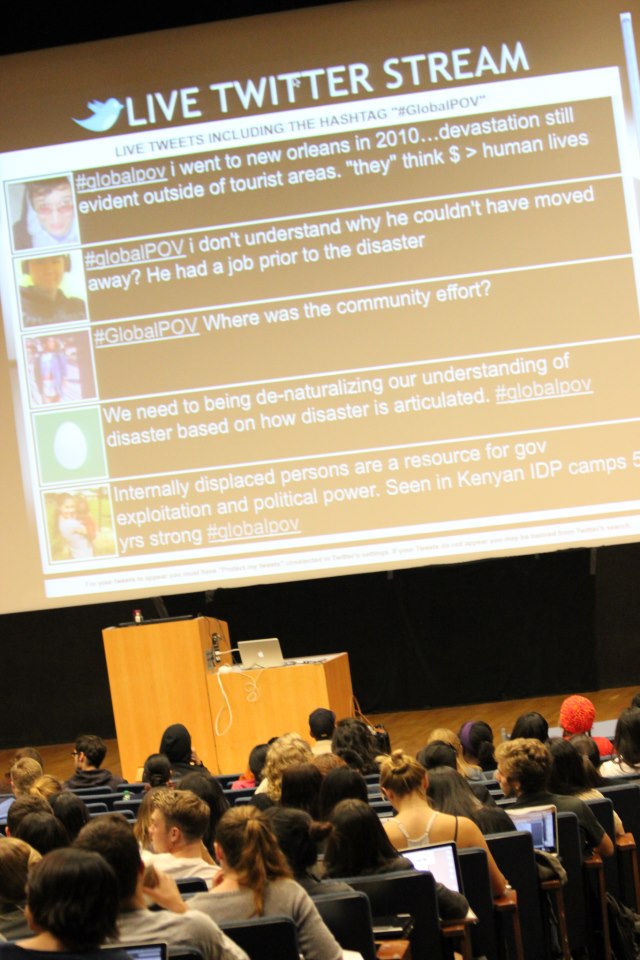By now, it’s common knowledge that Twitter and other forms of social media are transforming the ways in which our students engage with each other (and celebrities) outside of the classroom, but what about the ways in which these media tools can transform student participation and interaction during class? Or, inversely, the ways in which the classroom can transform the tone of discussions and sharing on social media? And, in turn, the ways in which these digital platforms can empower a generation of digital natives to speak up and weigh in on matters of public importance?
“There is nothing new about using social media in the classroom,” argues Tara Graham, a lecturer in the International and Area Studies Academic Program at the University of California, Berkeley. She has been using Twitter as a platform for dialogue and discussion in her classes on digital media and social justice for over a year. Graham’s workshop-style classes, however, are small in size, ranging from 15 to 20 students. The question follows:
Could Twitter encourage substantive discussion in large lecture hall classes with hundreds of students?
Graham teamed up with another UC Berkeley colleague, Ananya Roy, chair of the Global Poverty & Practice Minor, to put the question of scale to the test. Roy teaches a class on global poverty every fall that attracts at least 600 students. Early this semester, the two unleashed a live twitter feed into the auditorium, and the experience was wild.
Continue reading “#GlobalPOV: From Public University To Twitterverse”

